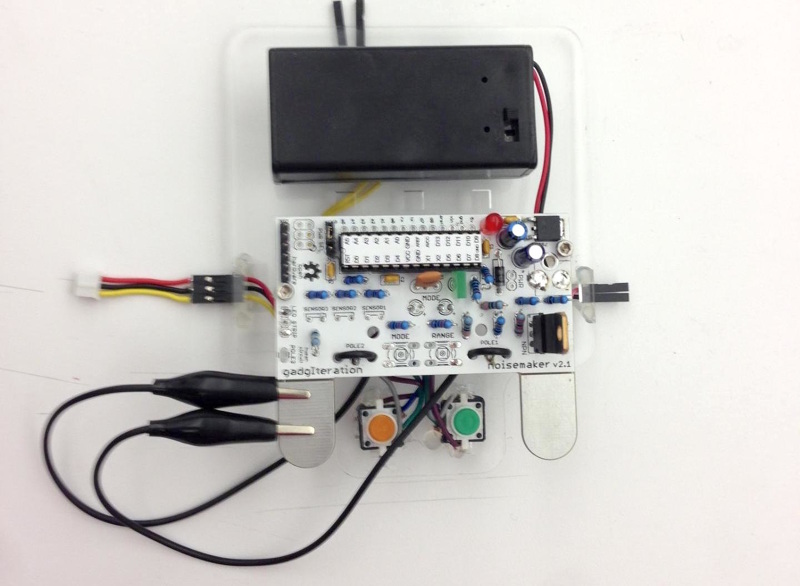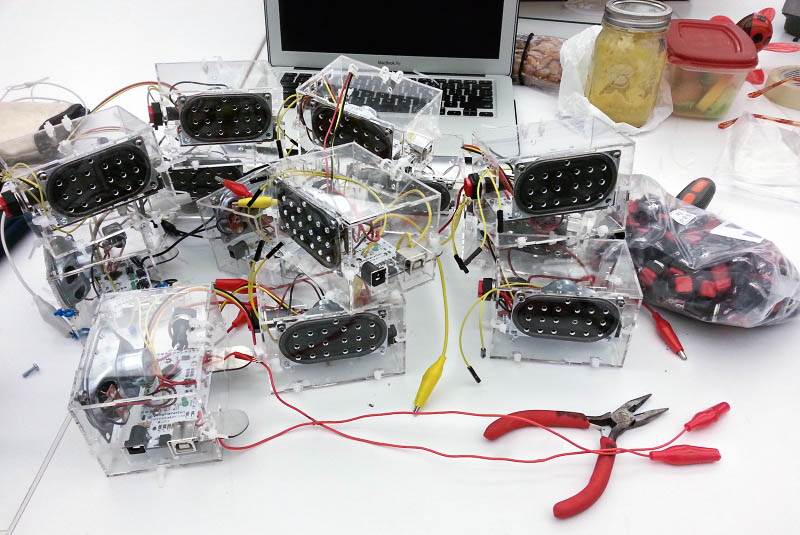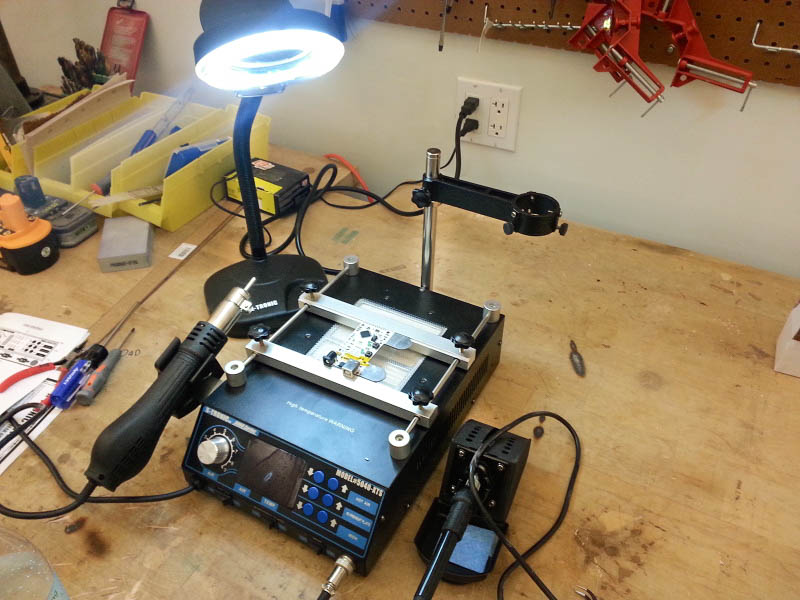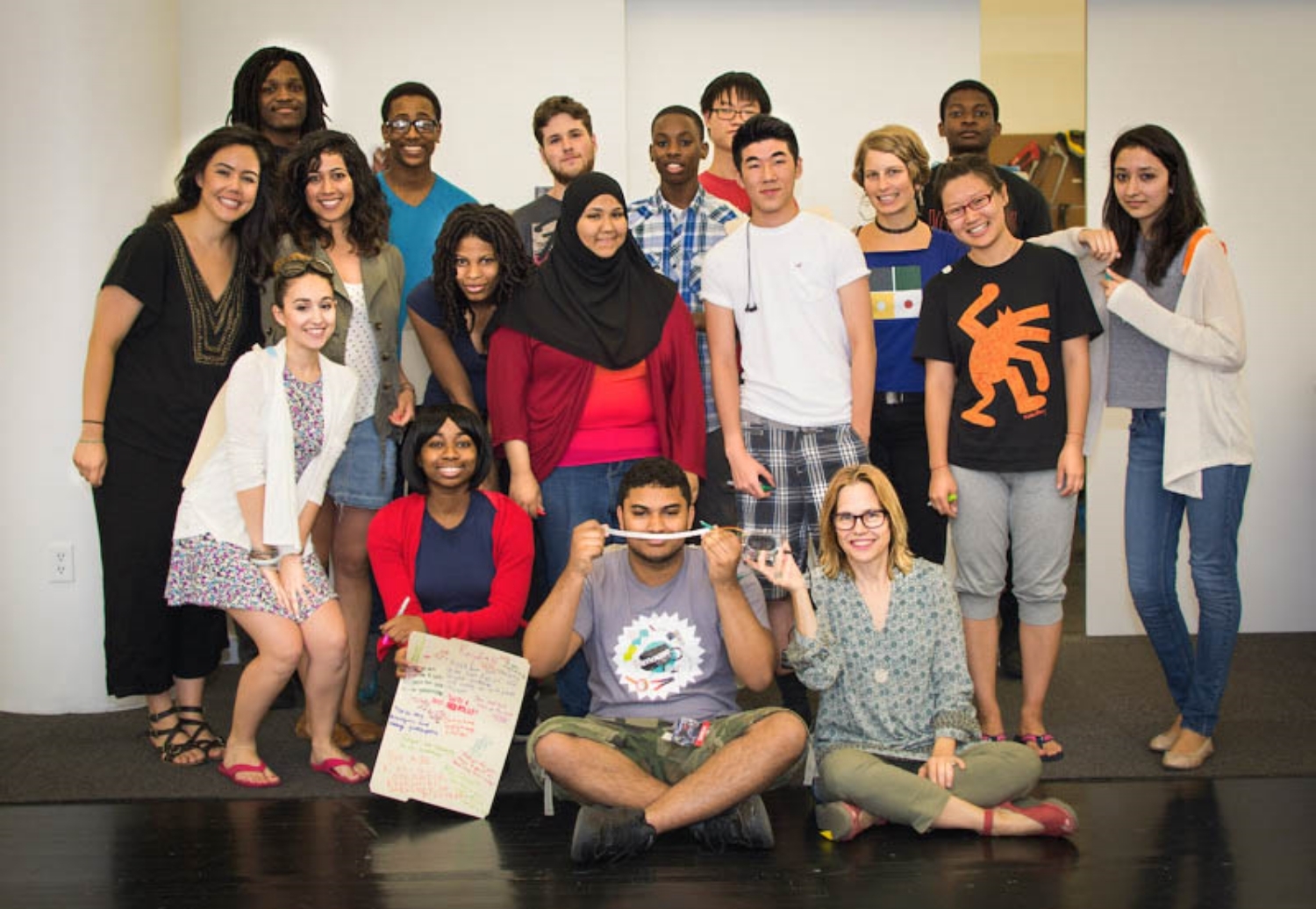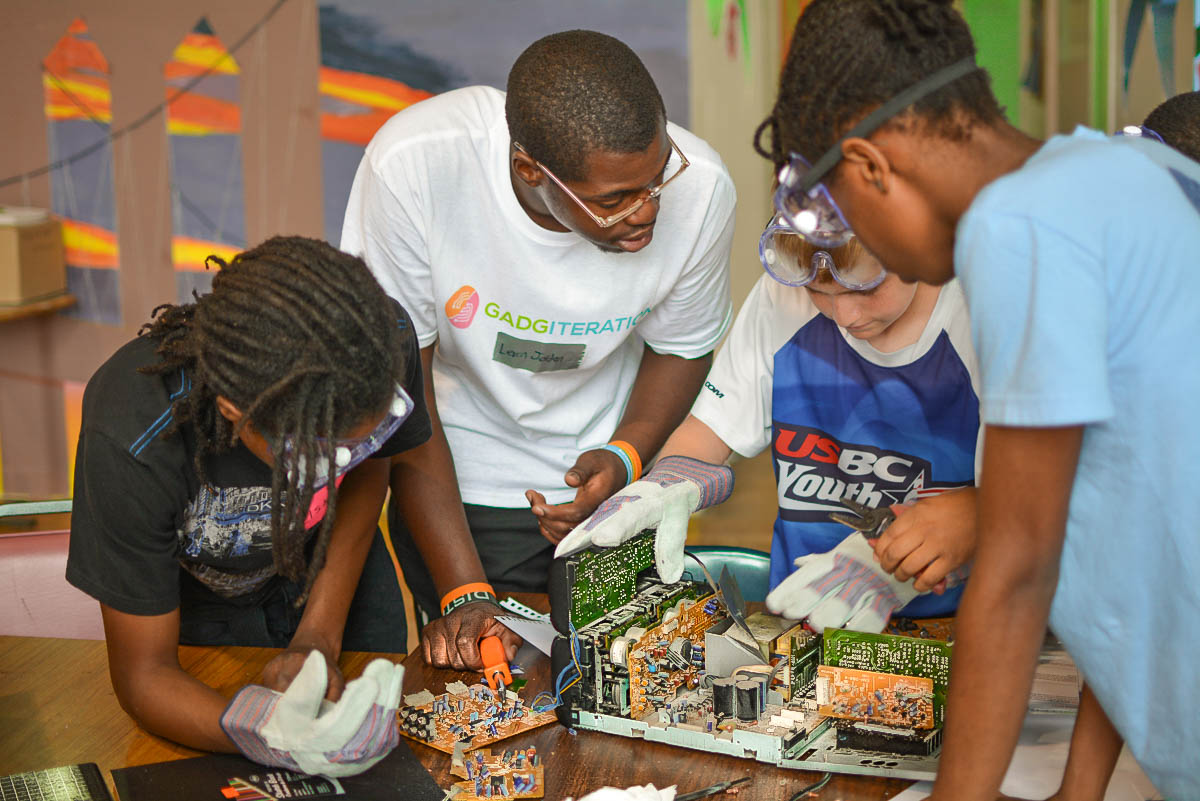The noiseMaker is a limited capability microcontroller board for novice exploration of electronic tinkering and creating with technology that was used during gadgITERATION. gadgITeration is an organization that offers a youth development program to explore computer engineering and interaction design and is generously supported by The Hive Digital Media and Learning Fund in The New York Community Trust, AMT-Parsons School of Design, and Google.
Credits
I worked with Louisa Campbell, Grace Gou, Tong Wen, and Joselyn McDonald as a designer and developer for gadgITERATION. My responsibilities included hardware redesign, software development, fabrication of The Noise Maker V3.0, workshop curriclum development, user testing, and tech demos.
Hardware Redesign Process
The noiseMaker V1.0 and V2.0 were designed with alligator clips, a pack of LEDs, a switch, and a speaker. Students used the noiseMaker to make interactive projects, and the alligator clips were used to allow the students to form human circuits which helped them understand basic circuit theory.
noiseMaker V1.0 and V2.0
01 - Challenge
The existing board did not meet certain curriclum goals, as well as goals that were outlined in the grant proposal. These goals included using the noiseMaker to:
- teach coding
- use as both a learning and teaching tool for student apprentices
02 - User
Middle school and high school students who will act as both student and teachers.
03 - Brainstorm & Ideation
Our design team came up with a number of various improvements that included extending the functionality and improving the usability of the noiseMaker. We wanted the noiseMaker to be able to sense the environment better with sensors and for students to be able to create their own tech demos by writing and uploading their code to the board using the Arduino development environment.
04 - Rapid Prototyping & User Testing Cycles
User Testing V2.1
Our team user tested V2.1 at a workshop with Brooklyn Creative Arts Lab by prototyping their own Super Hero Costumes & Devices using the noiseMaker, paper, and fabrics.
User Testing Findings & noiseMaker V3.0
The ability to see the microcontroller board allowed students to see the electronics and fostered conversation around how the electronics work. Although the openness was successful as a learning tool, the noiseMaker needed an enclosure to protect the electronic parts from being scrapped off or deformed. Additionally, the speaker was difficult to use since it was not directly connected to the noiseMaker, and many students wanted to use it in their projects.
Training BCAL & MOUSE Apprentices at Parsons
After finalizing noiseMaker V3.0, we organized a 3 week intensive summer workshop for 100 middle school and high school students to explore electronics and interaction design using the noiseMaker. Leading up to the summer workshop, I assisted in training high school students from MOUSE and Brooklyn Creative Arts Lab on how to use the noiseMaker, develop their own interactive demos using the Arduino IDE, and facilitate skills sharing.






